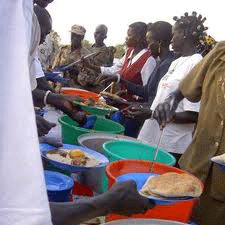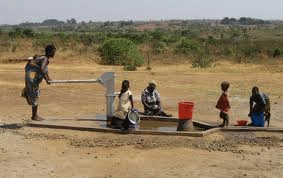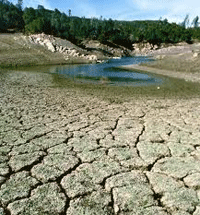WHEN one lives in a tropical country with lush rainforests and rich coastal soil, the notion is that, deserts belong to far away lands such as, Africa and Asia. Furthermore, living in the land of many waters means that desertification and drought are events only heard of in the news.  However, the reality is that, desertification can happen anywhere there is productive soil. In fact, worldwide desertification directly affects some 250 million people and threatens the livelihood of approximately one billion people who depend on land for most of their needs. The majority of those affected, are poor people who do not have access to financial and other means such as technology to properly manage their land.
However, the reality is that, desertification can happen anywhere there is productive soil. In fact, worldwide desertification directly affects some 250 million people and threatens the livelihood of approximately one billion people who depend on land for most of their needs. The majority of those affected, are poor people who do not have access to financial and other means such as technology to properly manage their land.
Desertification is the gradual loss of soil productivity and the decrease in vegetative cover resulting from human activities and some climatic conditions.
Droughts are temporary conditions that occur when there is less than normal rainfall over an extended period or when there is excess evaporation of water, that usually results in water shortage.
Causes of desertification and drought
| Human | Natural |
| Deforestation | Flash floods |
| Overgrazing | Prolonged droughts |
| Poor irrigation practices | Climate change (extreme heat causing excess evaporation) |
| Overcultivation | |
| Lack of funding to support land reclamation and anti-desertification programmes | |
| Climate change (rising sea levels causing salt water intrusion) |

Every year on June 17, World Day to combat desertification and drought is observed to highlight the urgent need to curb the desertification process. It also aims to strengthen the visibility of drylands issue on the international environmental agenda.
The theme for this year’s observances is “Healthy soil sustains your life: Let’s go land-degradation neutral”. The Executive Secretary for the UNCCD, Dr. Luc Gnacadja highlighted that, “soil is key for securing water, energy, and building resilience to climate change”. Therefore, the international community needs to take urgent action in order to avoid the increasing loss of land.” The day will also highlight the efforts required to secure long-term sustainable land management.
Healthy soils produce life, and yet soil health depends a lot on how individuals use their land. What we do to our soils, determines the quality and quantity of the food we eat and how our ecosystems serve us. Our increasing ecological interdependence also means ‘enhancing soils anywhere enhances life everywhere’.
Effects of drought and desertification
| Natural environmental effects | Socio-economic effects |
| • Dust storms. |
• Water shortages can increase the price of providing the commodity. |
| • Habitat damage for both aquatic and terrestrial ecosystems and wildlife. |
• Unproductive soil leads to low agricultural output, creating food shortage. |
| • Increase in wildfires. |
• Social unrest and even war over the use and distribution of natural resources |
| • Increase in pest populations. |
• Mass migration resulting in displaced populations and international refugees. |
| • Malnutrition, dehydration, related diseases and even death. |
Solutions
Over the years, there have been a number of technologies and strategies employed globally, particularly in vulnerable areas, to combat desertification and drought.
1. Construction of dams and reservoirs can supply water in times of drought.
2. Cloud seeding: an artificial technique used to induce rainfall.
3. Desalination: removing salt from seawater to make it safe for human consumption.
4. Rainwater harvesting: safe collection and storage of rainwater.
5. Recycling water: treating and purifying of wastewater for reuse.
6. Land use planning: planting less water dependent crops, planting leguminous plants that add nutrients to the soil, planned crop rotation etc.
7. Reforestation: replanting trees in areas where they once existed.
8. Sand fences: used to control the drifting of soil and sand erosion.
Jojoba plantations, such as those shown, have played a role in combating edge effects of desertification in the Thar Desert, India.
Source: www.un.org
DROUGHT-O-MANIA
Unscramble each of the clue words.
Copy the letters in the numbered cells to other cells with the same number.
You can share your ideas and questions by sending letters to: “Our Earth, Our Environment”, C/O EIT Division, Environmental Protection Agency, Ganges Street, Sophia, GEORGETOWN or email us at eit.epaguyana@gmail.com



.jpg)










